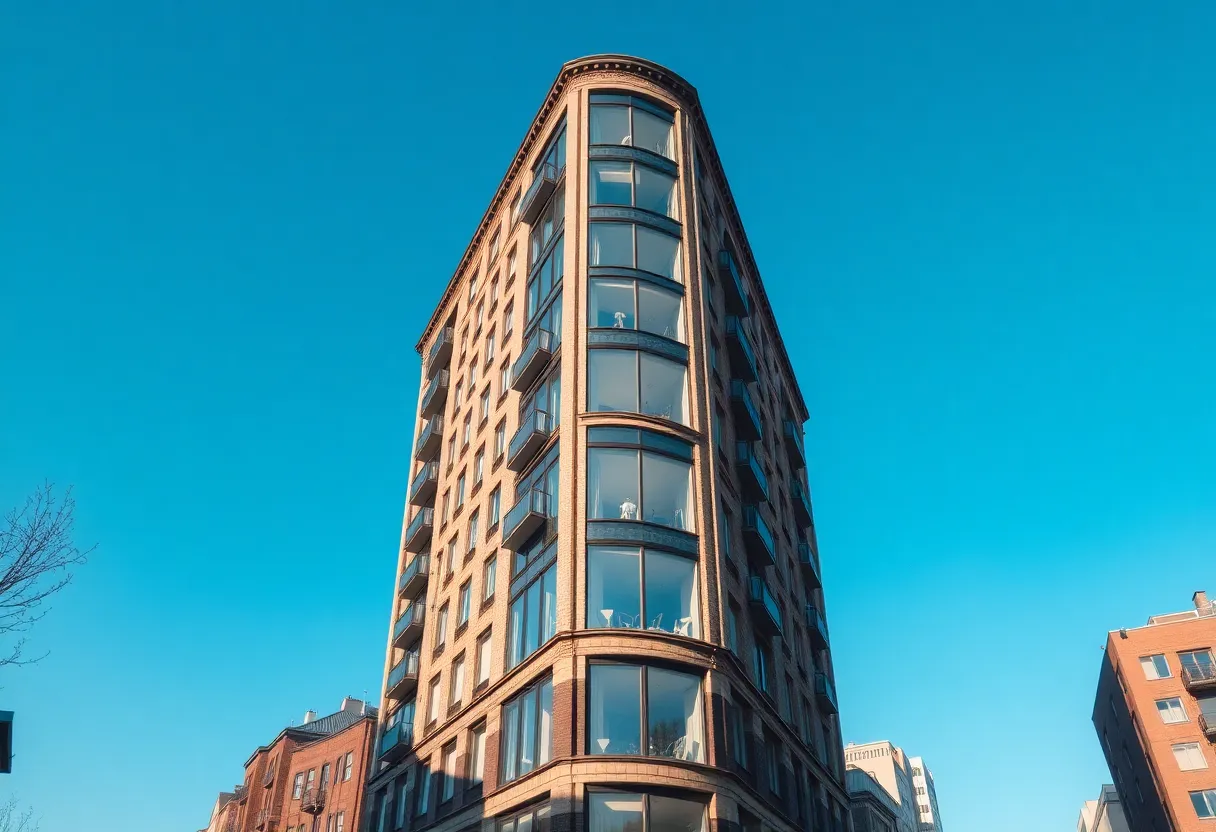Boston, September 15, 2025
News Summary
Boston has initiated an office-to-residential conversion program to combat downtown office vacancies while increasing housing supply. This 2023 initiative combines tax incentives, zoning adjustments, and state funding to convert underutilized office buildings into apartments, dorms, and workforce housing. Approximately 780 housing units are in the development pipeline, supported by $15 million in state funding. The program encourages adaptive reuse of historic buildings and aims to address both housing shortages and high office vacancy rates in the city’s core.
Boston
Boston has launched an office-to-residential conversion program designed to address a growing downtown office vacancy problem while adding new housing supply. The city’s 2023 initiative pairs tax reductions, zoning adjustments and state support to encourage conversion of underused office buildings into apartments, dorms and workforce housing. The program has produced a pipeline of roughly 780 housing units, received $15 million in state funding, and has already enabled completed and underway projects that are repurposing older office stock into residential units.
Key developments and immediate impact
The conversion program offers downtown projects tax reductions of up to 75% over 29 years, along with changes to zoning rules intended to make reuse financially viable. The initiative has led to both small-scale conversions and larger projects in process, including two buildings being redeveloped by a local developer: a completed conversion at 281 Franklin St. in the Financial District that added 15 new apartments, and a larger project at 263 Summer St. in Fort Point (the former Boston Wharf Co. building) that began construction in July and is expected to yield 77 units by fall 2026.
Origins of the program and observed vacancy conditions
Local developers and brokers raised alarms after on-site observations highlighted a disparity between published vacancy statistics and real-world conditions inside many office buildings. In early 2023, a broker touring multiple properties found numerous floors and suites appearing largely unused despite reported occupancy levels. Signs included desks with unfinished paperwork, scribbled whiteboards and abandoned cups—indicators of substantial non-occupancy that did not align with third-party vacancy metrics.
Why conversion is being prioritized
Multiple economic factors underpin the strategy. Elevated borrowing costs have made greenfield residential construction and new-build projects more expensive, shifting the economics in favor of adaptive reuse. Because the most costly element in construction is the base building structure, converting an existing building can be significantly cheaper than demolishing and rebuilding. The program emphasizes pre-World War II buildings that typically have robust masonry and steel structures, smaller floor plates and abundant natural light—features that reduce the need for extensive structural intervention and suit residential layouts.
Financial tools and eligibility
The city’s approach leverages a mix of fiscal and regulatory incentives. Participating projects can access long-term tax relief, zoning flexibility that allows residential use where office zoning previously prevailed, and eligibility for federal and state historic tax credits when converting qualifying prewar structures. Those tax credits are treated as essential to many projects’ financial viability, particularly for older buildings with eligible historic features.
Scale, funding and program timeline
The program generated roughly 780 units in the development pipeline, encompassing a range of housing types including dormitory-style units and workforce housing. State leadership provided a $15 million allocation to augment the city’s incentives and support project readiness and infrastructure adjustments. The office-to-residential initiative was introduced in 2023 and carried an initial sunset date at the end of that year; stakeholders have urged extension of the program to sustain conversions and enable more projects to proceed to completion.
Implementation notes and next steps
Project teams are incorporating resident feedback as newly converted buildings begin occupancy, using that input to refine amenity packages and unit configurations. Developers report ongoing opportunities for conversion across the city’s underutilized office inventory, especially with buildings that retain historic character and structural adequacy. City and state officials continue to monitor program uptake, financial outcomes and housing production to determine whether incentives should be adjusted or extended.
Background context
The push to convert office buildings into housing responds to intersecting trends: shifting office demand driven by hybrid work patterns, a need for more housing near transit and employment centers, and a tighter financing environment for new construction. Adaptive reuse addresses these pressures by converting existing assets to meet current housing demand while avoiding the higher capital requirement of new builds. Historic tax credit programs at the state and federal levels further tilt the balance toward converting older buildings that qualify for preservation incentives.
Frequently Asked Questions
What is the goal of Boston’s office-to-residential conversion program?
The program aims to reduce downtown office vacancy and increase housing supply by encouraging owners to convert underused office buildings into residential units through tax incentives and zoning changes.
What incentives does the program offer?
Incentives include tax reductions of up to 75% over 29 years for eligible downtown projects, zoning adjustments to permit residential use, and alignment with state and federal historic tax credit programs for qualifying buildings.
How many housing units are expected from the program?
Approximately 780 housing units are currently in the program pipeline, spanning small apartment conversions to larger projects that include workforce and dormitory-style units.
Which buildings are already in conversion?
Examples include 281 Franklin St. (completed conversion adding 15 apartments) and 263 Summer St. (construction started in July, expected to deliver 77 units by fall 2026).
Why focus on pre-World War II buildings?
Prewar buildings typically have solid base structures, favorable layout characteristics for apartments, and eligibility for historic tax credits that improve conversion economics.
Is the program permanent?
The initiative was launched in 2023 with an initial expiration timeline; stakeholders have advocated extending the program to allow more conversions to proceed.
Program and Project Snapshot
| Item | Details |
|---|---|
| Program objective | Convert underused office buildings to residential units to reduce vacancy and increase housing supply |
| Key incentive | Tax reductions up to 75% over 29 years for eligible downtown projects |
| State support | $15 million allocated to support conversions and related needs |
| Units in pipeline | Approximately 780 units (includes apartments, dorms, workforce housing) |
| Notable projects | 281 Franklin St. — completed (15 apartments); 263 Summer St. — under construction (77 units expected Fall 2026) |
| Preferred building types | Pre-World War II buildings with solid base structure and historic features |
| Financing drivers | High borrowing costs favor adaptive reuse over new construction; historic tax credits improve feasibility |
| Program timeline | Introduced in 2023 with an initial sunset at end of 2023; extension advocated by developers and stakeholders |
| Next steps for stakeholders | Monitor program extensions, review zoning and tax details, and gather resident feedback to inform future conversions |
Deeper Dive: News & Info About This Topic
HERE Resources
Boston’s Office Market Shows Signs of Stabilization
CBRE Boston Multifamily Team Achieves Remarkable Success
Skanska Partners with Simmons University for Mixed-Use Development
City Employee Faces Felony Charges After Violent Traffic Stop
Boston City Councilors Demand Review of Hiring Practices
Boston’s Luxury Home Values Surpass $3 Million Milestone
Boston Launches Anti-Displacement Action Plan
MBTA Communities Act Boosts Multifamily Housing Development
Boston Expands Liquor License Opportunities for Local Businesses
Federal Government Considers Sale of Boston Office Buildings
Additional Resources
- Boston Globe: Office Vacancy Conversion Program
- NBC Boston: Record High Vacancy Rate
- CoStar: Boston Office Vacancy Hits 25-Year High
- Boston Real Estate Times: National Office Market Trends
- Bloomberg: Crazy Vacancies Force Boston Landlords to Challenge Valuations
- Wikipedia: Boston
- Google Search: Boston office vacancy
- Google Scholar: Boston office conversion
- Encyclopedia Britannica: Boston
- Google News: Boston office vacancy

Author: STAFF HERE BOSTON WRITER
The BOSTON STAFF WRITER represents the experienced team at HEREBoston.com, your go-to source for actionable local news and information in Boston, Suffolk County, and beyond. Specializing in "news you can use," we cover essential topics like product reviews for personal and business needs, local business directories, politics, real estate trends, neighborhood insights, and state news affecting the area—with deep expertise drawn from years of dedicated reporting and strong community input, including local press releases and business updates. We deliver top reporting on high-value events such as Boston Marathon, Head of the Charles Regatta, and Boston Harborfest. Our coverage extends to key organizations like the Greater Boston Chamber of Commerce and Associated Industries of Massachusetts, plus leading businesses in finance, biotech, and insurance that power the local economy such as Fidelity Investments, Biogen, and Liberty Mutual Insurance. As part of the broader HERE network, we provide comprehensive, credible insights into Massachusetts's dynamic landscape.





